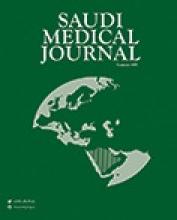Abstract
OBJECTIVE: This study was aimed to deal with a serious obstetrical problem in Wad Medani Teaching Hospital, Medani, Sudan. The study reviewed the incidence of obstructed labor, its clinical presentation and methods of diagnosis. The study also includes the methods of treatment and its complications.
METHODS: A prospective and descriptive study was carried out in Wad Medani Teaching Hospital, Medani, Sudan. Case notes were studied for all cases with obstructed labor received during the period 1 January 1997 to 31 December 1999. The data was analyzed. The literature was reviewed for similar studies.
RESULTS: During the period 207 cases of obstructed labor were diagnosed. The total number of deliveries during the same period was 16221, giving an incidence of 1.27%. The most striking symptoms are tachycardia and low blood pressure, while the common sign is the non-engagement of the presenting part. The most common complication is septicemia.
CONCLUSION: Obstructed labor remains a major obstetrical problem. Adequate antenatal care and proper care at delivery could prevent it. The obstructed labor should always be anticipated and the attendant should not wait for the advanced classical signs to make the diagnosis. Early intervention is associated with an excellent outcome.
- Copyright: © Saudi Medical Journal
This is an open-access article distributed under the terms of the Creative Commons Attribution-Noncommercial-Share Alike 3.0 Unported, which permits unrestricted use, distribution, and reproduction in any medium, provided the original work is properly cited.






